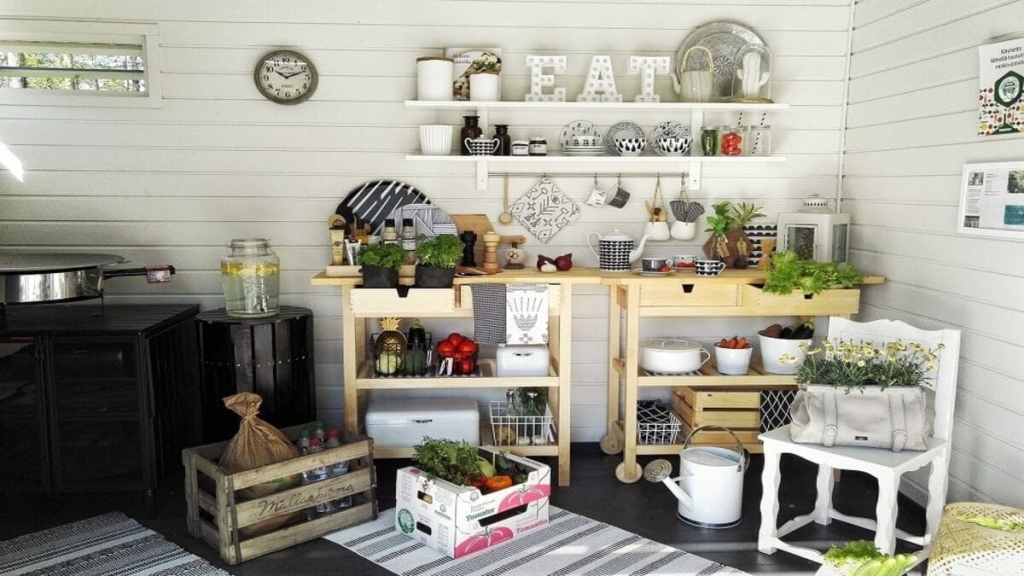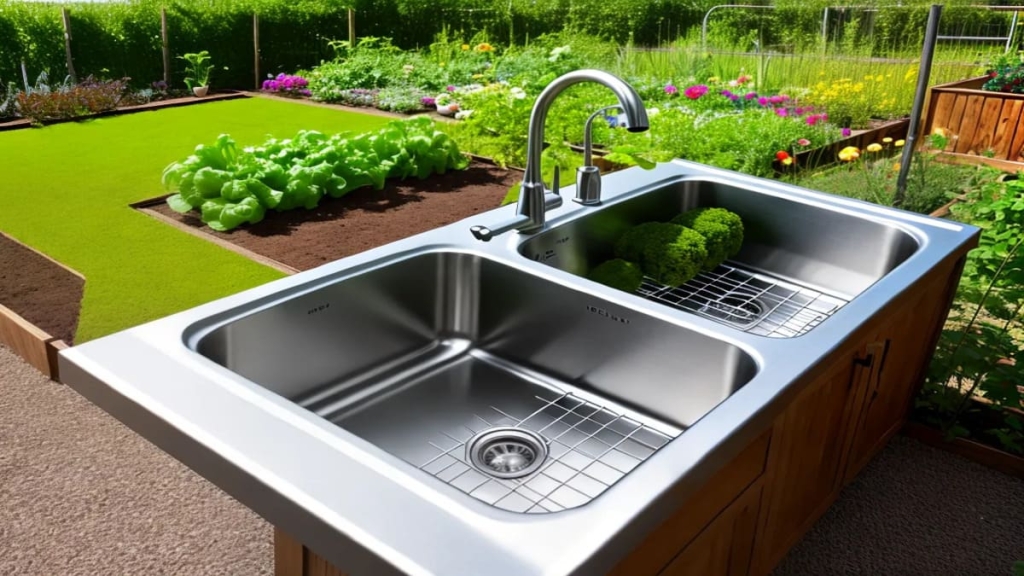A cozinha sustentável é um conceito menos complexo do que se imagina, bastando para isso que sejam incorporados cinco princípios fundamentais: repensar, recusar, reduzir, reutilizar e reciclar. Estes são os cinco pilares da sustentabilidade que se integram perfeitamente a qualquer espaço da sua casa, com ênfase na cozinha.
Why the kitchen? Well, it is the part of the house that generates the most waste. Each person produces an average of one kilo of garbage per day. It may not seem like much, but if we multiply this number by the population of a neighborhood, city, state, country and even the world, we can see the magnitude of the problem.
Collective reflection helps us better understand the impact of our individual actions on the preservation of the planet and humanity. Therefore, continue reading this text and discover how to transform your kitchen into a sustainable environment.
Adopting Sustainable Practices in the Kitchen

To start incorporating sustainability into your kitchen, the first step is to be open to new ideas and lifestyles. You don’t have to become an eco-activist to do this. Small changes can have a big positive impact on the planet. The best part? Your physical and mental well-being, and even your wallet, will benefit from it.
Check out the following 5 tips:
What are the five pillars of sustainability? Before we give you our tips, it is important that you understand the meaning of the five pillars of sustainability. They will guide the sustainable practices you will adopt. So, let’s quickly understand them.
Rethink
The first pillar is “rethinking.” Here, the idea is for you to consider whether you really need the item you’re thinking of buying. All products consume natural resources to be produced, including water and forest land. So, take a moment to reflect on whether you’re just following a trend or whether you could find an alternative to the item you’re thinking of buying, such as a second-hand product or reusing some material.
Refuse
Once you’ve passed the first pillar, you have the power to “refuse.” Yes, it’s powerful! You can refuse anything from buying a new appliance to buying a small plastic bag at the grocery store.
Reduce
Couldn’t refuse? Then “reduce”. Buy the minimum necessary, always consciously, to avoid waste.
Reuse
The next pillar is “reuse.” Don’t throw anything away until you’ve checked whether it can be reused. This can include food stems or peels, as well as packaging. The longer you can extend the life of a product, the more sustainable your kitchen will be.
Recycle
Some may think that recycling is the only solution for a sustainable future, but it is just one part of a much more complex system. While crucial, recycling is the last option after rethinking, refusing, reducing and reusing. However, this does not mean that it is any less important or impactful.
Recycling is the process by which materials that would otherwise be wasted are collected, processed, and transformed into new products. Recycling can be a little more complex than it seems. Different materials require different recycling processes, and not all materials are recyclable. For example, did you know that not all plastic can be recycled? Or that in order to recycle paper, it must not be contaminated with food or oil?
Additionally, it’s important to remember that even if something is technically recyclable, not all municipalities have the facilities to recycle certain types of materials. As such, it’s important to know the recycling system in your area. So how does recycling fit into your sustainable kitchen? First, separate your waste. Separate recyclable materials, such as plastics, glass, metal, and paper, from organic waste. You may have different collection bins for different types of waste, for example.
Try to minimize the amount of waste you produce in the first place. For example, opt for products with less packaging, or choose packaging that you know is recyclable in your area. Last but not least, find out about recycling facilities in your area. Check what materials are accepted and make sure your recyclables are clean and free of contaminants.
Transforming your Kitchen into a Green Environment
A sustainable kitchen doesn’t end with recycling. In fact, there are several other considerations to make when designing an eco-friendly kitchen environment.

Energy Efficient
When thinking about sustainable kitchens, one of the first things to consider is energy efficiency. Choose appliances with a high energy efficiency rating. Energy-efficient appliances not only use less energy, reducing your carbon footprint, but they can also help you save on your energy bills in the long run.
Intelligent Use of Water
Water is a precious resource and it is essential that we use it wisely. Consider installing low-flow faucets and practice good water consumption habits, such as turning off the faucet when soaping dishes or brushing your teeth.
Sustainable Materials
Se você está planejando uma reforma na cozinha, considere o uso de materiais sustentáveis. Por exemplo, você pode optar por bancadas feitas de materiais reciclados ou madeira certificada de manejo sustentável. Isso significa que a madeira foi extraída de florestas geridas de forma a preservar o seu valor a longo prazo, protegendo a biodiversidade e os direitos dos trabalhadores e das comunidades locais.
The same goes for cabinets and shelves. Choose materials from sustainable sources whenever possible. Even the paints you use to give your kitchen a new lease of life can be eco-friendly. There are paints on the market that are low in volatile organic compounds (VOCs), substances that can be harmful to your health and the environment.
Composting
Composting is another strategy you can incorporate into your sustainable kitchen. Organic waste, such as fruit and vegetable scraps, coffee grounds, and eggshells, can be composted instead of thrown away. Composting turns these wastes into rich soil that can be used in your garden, reducing the need for chemical fertilizers. If you don’t have space for a compost bin, many cities offer municipal composting programs.
Conscious Shopping
Finally, the choices you make when purchasing food and kitchen supplies can also contribute to a more sustainable kitchen. Opt for local and seasonal foods whenever possible. Not only do these foods taste better, they also have a smaller carbon footprint since they don’t have to be transported from far away.
When purchasing kitchen appliances, choose durable, high-quality items that won’t need to be replaced often. And whenever possible, opt for products that are sustainably and ethically made. A sustainable kitchen is more than just a space where you prepare food. It’s a place where you can make conscious decisions that have a positive impact on our world. And while these changes may seem small, when added together, they can make a big difference.
Did you like this amazing tip? If so, share it with your friends and on your social networks. Leave your comment below and your suggestions. Receive it daily here on our website. Blog of ideas and tips free and follow us on Google News too. Thank you!